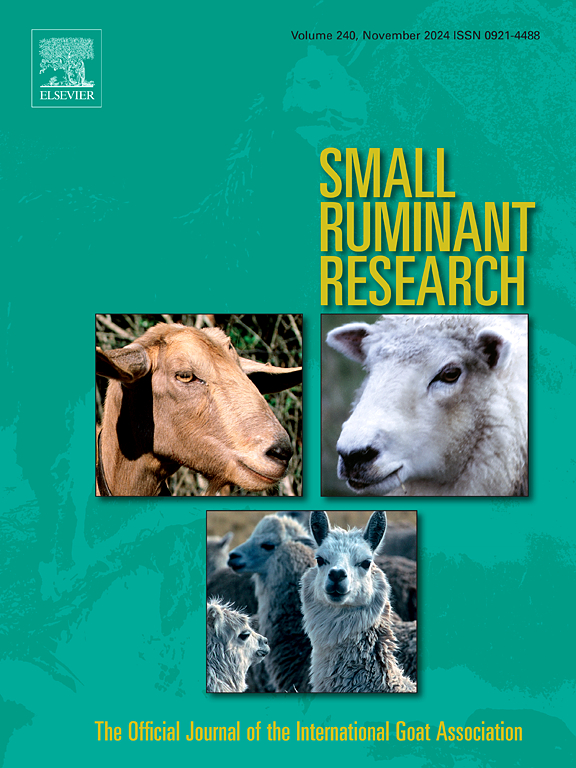Genetic characterization and bottleneck analysis of Molai Adu and Pallai Adu goats from Southern India
IF 1.6
3区 农林科学
Q2 AGRICULTURE, DAIRY & ANIMAL SCIENCE
引用次数: 0
Abstract
Genetic characterization and bottleneck analysis of Molai Adu and Pallai Adu goats from southern India were conducted using 25 microsatellite markers recommended by the FAO (2011). Molai Adu, the only naturally polled goat breed in India, showed a total of 202 alleles, with an average of 8.08 ± 0.435 alleles per locus, while Pallai Adu, known for their prolific nature, exhibited a higher count of 219 alleles, averaging 8.76 ± 0.581 alleles per locus. Both breeds demonstrated high genetic diversity, as evidenced by the elevated number of observed alleles, Polymorphism Information Content (PIC), and expected heterozygosity values. Out of the 25 loci analyzed, only three were in Hardy-Weinberg equilibrium, with the remaining 22 loci showing significant deviations in both goat populations. The study also revealed a genetic identity of 0.7720 between Pallai Adu and Molai Adu goats, corresponding to a genetic distance of 0.2588. Bottleneck analysis indicated no signs of recent population bottlenecks, as most loci displayed heterozygote excess and an L-shaped allele frequency distribution, suggesting stable genetic diversity. These findings underscore the genetic richness and adaptability of Molai Adu and Pallai Adu goats, highlighting their importance for conservation and sustainable breeding initiatives.
印度南部Molai Adu山羊和Pallai Adu山羊的遗传特征和瓶颈分析
利用粮农组织(2011年)推荐的25个微卫星标记,对印度南部的Molai Adu和Pallai Adu山羊进行了遗传表征和瓶颈分析。印度唯一一个自然调查的山羊品种Molai Adu共有202个等位基因,平均每个位点有8.08个 ± 0.435个等位基因,而以高产而闻名的Pallai Adu有219个等位基因,平均每个位点有8.76个 ± 0.581个等位基因。观察到的等位基因数量、多态性信息含量(PIC)和预期的杂合度值均显示出较高的遗传多样性。在分析的25个基因座中,只有3个基因座处于Hardy-Weinberg平衡状态,其余22个基因座在两个山羊种群中都表现出显著的差异。帕莱阿杜山羊与莫莱阿杜山羊的遗传同源性为0.7720,遗传距离为0.2588。瓶颈分析表明,大多数位点表现出杂合子过多和等位基因频率呈l型分布,表明遗传多样性稳定。这些发现强调了Molai Adu山羊和Pallai Adu山羊的遗传丰富性和适应性,突出了它们对保护和可持续育种计划的重要性。
本文章由计算机程序翻译,如有差异,请以英文原文为准。
求助全文
约1分钟内获得全文
求助全文
来源期刊

Small Ruminant Research
农林科学-奶制品与动物科学
CiteScore
3.10
自引率
11.10%
发文量
210
审稿时长
12.5 weeks
期刊介绍:
Small Ruminant Research publishes original, basic and applied research articles, technical notes, and review articles on research relating to goats, sheep, deer, the New World camelids llama, alpaca, vicuna and guanaco, and the Old World camels.
Topics covered include nutrition, physiology, anatomy, genetics, microbiology, ethology, product technology, socio-economics, management, sustainability and environment, veterinary medicine and husbandry engineering.
 求助内容:
求助内容: 应助结果提醒方式:
应助结果提醒方式:


